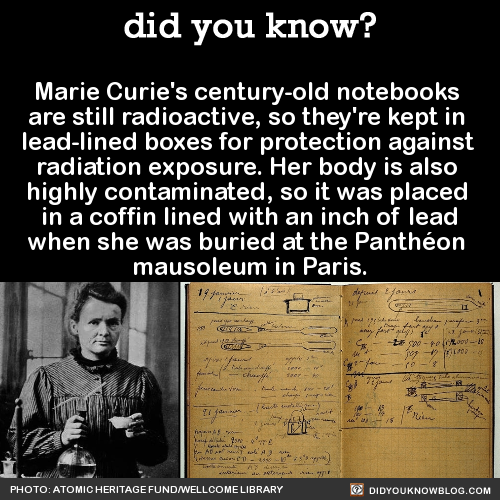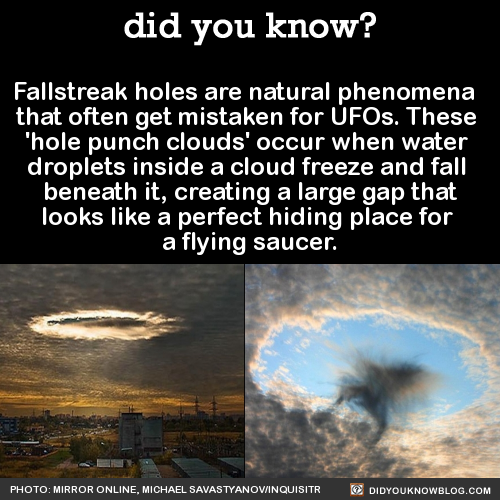If There Is Magic On This Planet, It Is Contained In Water :D








If there is magic on this planet, it is contained in water :D
More Posts from Thestarblaster-blog and Others

If a person has experienced just one episode of depression in their lifetime, there’s a 50% chance they will have a second. If that happens, they become 80% more likely to endure it a third time. Source
The Moon Just Photobombed NASA’s Solar Dynamics Observatory
On May 25, 2017, the moon photobombed one of our sun-watching satellites by passing directly between the satellite and the sun.

The Solar Dynamics Observatory, or SDO, orbits Earth and watches the sun nearly 24/7 — except when another body, like the moon, gets in the way. These lunar photobombs are called transits, the generic term for when any celestial body passes in front of another.
Transits are one way we detect distant worlds. When a planet in another star system passes in front of its host star, it blocks some of the star’s light so the star appears slightly dimmer. By monitoring changes in a star’s light over time, scientists can deduce the presence of a planet, and even determine what its atmosphere is like. This method has been used to discover thousands of planets, including the TRAPPIST-1 planets.

SDO sees lunar transits about twice a year, and this one lasted about an hour with the moon covering about 89 percent of the sun at the peak of its journey across the sun’s face.
When they’re seen from Earth, we call lunar transits by another name: eclipses.

Solar eclipses are just a special kind of transit where the moon blocks all or part of our view of the sun. Since SDO’s view of the sun was only partially blocked, it saw a partial eclipse. Later this year, on Aug. 21, a total eclipse will be observable from the ground: The moon will completely block the sun’s face in some parts of the US, creating a total solar eclipse on a 70-mile-wide stretch of land, called the path of totality, that runs from Oregon to South Carolina.
Throughout the rest of North America — and even in parts of South America, Africa, Europe and Asia — the moon will partially obscure the sun, creating a partial eclipse. SDO will also witness this partial eclipse.

Total solar eclipses are incredible, cosmic coincidences: The sun is about 400 times wider than the moon, but it also happens to be 400 times farther away, so the sun and moon appear to be the same size in our sky. This allows the moon to completely block the sun when they line up just right.

Within the path of totality, the moon completely obscures the sun’s bright face, revealing the comparatively faint corona — the sun’s pearly-white outer atmosphere.

It’s essential to observe eye safety during an eclipse. You must use proper eclipse glasses or an indirect viewing method when any part of the sun’s surface is exposed, whether during the partial phases of an eclipse, or just on a regular day. If you’re in the path of totality, you may look at the eclipse ONLY during the brief moments of totality.

A total solar eclipse is one of nature’s most awe-inspiring sights, so make your plans now for August 21! You’ll also be able to see the eclipse cross the country that day through the eyes of NASA – including views of the partial eclipse from SDO – on NASA TV and at nasa.gov.
Learn more about the August eclipse — including where, when, and how to safely see it — at eclipse2017.nasa.gov and follow along on Twitter @NASASun.
Sleepless Wolf Report
Hi guys!
Do you know the feeling when your body tells you that you need to sleep, but your brain are restless?
My head is aching from all the nights I haven’t being sleeping well. I’m feeling anxious about my mother who is in a hospital again, luckily it’s not anything too bad. I’m also restless because I’m moving to a new apartment soon. I need to find a job to have my bills payed and have some money to spend after. I know I’m not alone with these kind of problems, but I have none to speak with, so I write them down to ease my brain. I could use them to so many more fascinating things than anxiety and mental breakdowns in the middle of the night.
StarBlaster signing out

Marie Curie’s century-old notebooks are still radioactive, so they’re kept in lead-lined boxes for protection against radiation exposure.

Photo via: Wellcome Library, London
Anyone wishing to handle her notebooks, personal effects, or other items have to wear protective gear and sign a liability waiver, just in case. She basically walked around carrying radium and polonium in her pockets, so… yeah.

Photo via: Amanda Macias/Business Insider
Marie and her husband Pierre are buried in Paris’s Panthéon, a mausoleum in that contains the remains of distinguished French citizens — including philosophers Rousseau and Voltaire.
Source

According to his biographer, 24-year-old Abraham Lincoln had to settle a financial dispute by betting a gambler he could lift a barrel of whiskey off the floor and hold it while taking a ‘drink out of the bunghole.’ If he lost, the gambler got a fur hat; if he won, the gambler got nothing. So Abe dropped to a squat, lifted the barrel to his mouth, performed a reverse keg-stand, and won the bet. Source

There’s a biological reason why we can’t resist puppy dog eyes. Sustained eye contact significantly raises oxytocin levels in both humans and dogs, which encourages love, trust, and bonding. This response isn’t even found in hand- raised wolves, which suggests humans and dogs may have co-evolved to share this trait in order to be companions. Source Source 2 Source 3



Milky Way over Morganville, New Jersey
js

Fallstreak holes are natural phenomena that often get mistaken for UFOs. These ‘hole punch clouds’ occur when water droplets inside a cloud freeze and fall beneath it, creating a large gap that looks like a perfect hiding place for a flying saucer.



Aliens, obvi.

The rarity of fallstreak holes is what tends to throw people.

That paired with the tendency to look at anything in the sky and cry ‘UFO!’ is the perfect makings of a false alien alarm.

Sometimes these clouds have little rainbows inside.


They aren’t always circular, though…

They make all kinds of crazy shapes.

Including airplane/sword/cross/wieners.

Photos via: Rantplaces
Source
I wasn’t aware how introvert I’ve come with my depression. I’ve never being good at talking on the phone, but today when I should’ve made a phone call to the bank, I panicked over a word that I forgot and hang up before I even get to the line.

Stephen Hawking says humans have 1,000 years to leave Earth
Famed theoretical physicist Stephen Hawking has grim news for humanity: We have 1,000 years to get off Earth or we’re totally screwed. The 74-year-old delivered a speech on Tuesday at the Oxford Union in which he said “I don’t think we will survive another 1,000 years without escaping beyond our fragile planet.” He believes it will become impossible for us to keep living here.
follow @the-future-now
-
 herkeskurtarilmayihakeder liked this · 4 years ago
herkeskurtarilmayihakeder liked this · 4 years ago -
 partyingjoe reblogged this · 6 years ago
partyingjoe reblogged this · 6 years ago -
 partyingjoe liked this · 6 years ago
partyingjoe liked this · 6 years ago -
 awkwardrosestuff liked this · 6 years ago
awkwardrosestuff liked this · 6 years ago -
 paradokssuz liked this · 7 years ago
paradokssuz liked this · 7 years ago -
 temporal-paternal-unit liked this · 7 years ago
temporal-paternal-unit liked this · 7 years ago -
 blastersandwarpdrives reblogged this · 7 years ago
blastersandwarpdrives reblogged this · 7 years ago -
 villiansneedhugs liked this · 7 years ago
villiansneedhugs liked this · 7 years ago -
 sugaryfriedhardware reblogged this · 7 years ago
sugaryfriedhardware reblogged this · 7 years ago -
 sugaryfriedhardware liked this · 7 years ago
sugaryfriedhardware liked this · 7 years ago -
 junkilikey reblogged this · 7 years ago
junkilikey reblogged this · 7 years ago -
 people-suck-give-me-cute-things liked this · 7 years ago
people-suck-give-me-cute-things liked this · 7 years ago -
 fleurdebach5-blog liked this · 7 years ago
fleurdebach5-blog liked this · 7 years ago -
 pivziksixdude liked this · 7 years ago
pivziksixdude liked this · 7 years ago -
 sgtbot-blog liked this · 7 years ago
sgtbot-blog liked this · 7 years ago -
 hondayondas liked this · 7 years ago
hondayondas liked this · 7 years ago -
 fabulousvelociraptor liked this · 7 years ago
fabulousvelociraptor liked this · 7 years ago -
 bethetale-blog liked this · 7 years ago
bethetale-blog liked this · 7 years ago -
 ikaid liked this · 7 years ago
ikaid liked this · 7 years ago -
 mexicanedition liked this · 7 years ago
mexicanedition liked this · 7 years ago -
 ltsaradharkness liked this · 7 years ago
ltsaradharkness liked this · 7 years ago -
 rhysgfrelsa-eudyptula liked this · 8 years ago
rhysgfrelsa-eudyptula liked this · 8 years ago -
 flower-lightening liked this · 8 years ago
flower-lightening liked this · 8 years ago -
 thefaeborn reblogged this · 8 years ago
thefaeborn reblogged this · 8 years ago -
 sora-hitsugaya reblogged this · 8 years ago
sora-hitsugaya reblogged this · 8 years ago -
 sora-hitsugaya liked this · 8 years ago
sora-hitsugaya liked this · 8 years ago -
 normalcorn liked this · 8 years ago
normalcorn liked this · 8 years ago -
 romtid reblogged this · 8 years ago
romtid reblogged this · 8 years ago -
 romtid liked this · 8 years ago
romtid liked this · 8 years ago -
 rap-n-gorillaz liked this · 8 years ago
rap-n-gorillaz liked this · 8 years ago -
 londonbruva reblogged this · 8 years ago
londonbruva reblogged this · 8 years ago -
 chillin-on-mountains reblogged this · 8 years ago
chillin-on-mountains reblogged this · 8 years ago
Here I have things and stuff I like. I'm 18 years old pup who loves space and sciece. You may find some fascinating things here.
41 posts